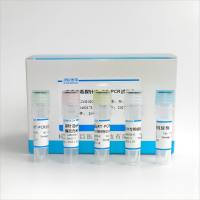Quantitative, Competitive RT-PCR Analysis of Biomarkers in the Study of Neoplasia
互联网
554
The current status of the evaluation of many neoplasias (e.g., carcinoma of the prostate), relies on analysis of tumor stage and/or grade to predict the outcome of disease. Recent developments in screening practices with circulating markers, such as prostate-specific antigen (PSA), has led to the diagnosis of preneoplastic and early neoplastic lesions (1 –4 ). Although it is generally thought that these very early lesions will eventually progress to malignant disease, it is not always the case. In the early lesions, staging and grading of tumors has not predicted eventual outcome with any certainty. For this reason, other surrogate biomarkers have been sought to help distinguish potential bad outcomes from those that do not progress and therefore need no intervention. Surrogate biomarker analysis of neoplasia can involve measurement of protein species, and several markers have been associated with specific neoplastic conditions (5 –8 ). Alternatives to protein analysis include genetic-instability determinations (9 –12 ) or mRNA analysis for molecules, such as growth factors/ proto-oncogenes (13 –15 ). Assaying mRNA makes sense if the gene of interest does not encode for proteins against which antibodies are currently available, when those genes are controlled primarily at the level of transcription of mRNA, or if protein assays are insensitive. Analysis of mRNA has classically used Northern blot assays, which suffer from sensitivity problems, or RNA protection assays (SI nuclease assay or RNase protection assay), which are more sensitive than Northern blotting, but are still relatively insensitive. With the advent of the polymerase chain reaction (PCR), attempts have been made to first measure DNA (16 –18 ) and then RNA markers for disease (13 –15 ).








